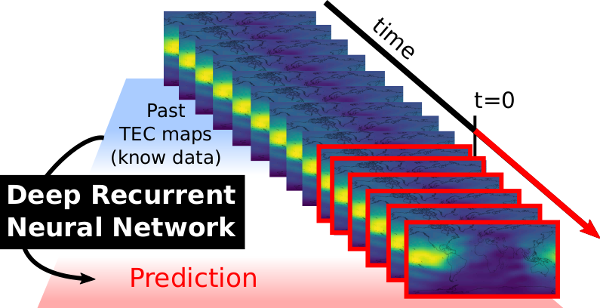TEC prediction using convolutional recurrent neural networks
Reference
When using this code, cite the related paper:
Ionospheric activity prediction using convolutional recurrent neural networks by Boulch Alexandre and Cherrier Noelie and Castaings Thibaut
@article{boulch2018ionosphere,
title={Ionospheric activity prediction using convolutional recurrent neural networks},
author={Boulch, Alexandre and Cherrier Noelie and Castaings Thibaut},
journal={arXiv preprint arXiv:1810.13273},
year={2018},
url={https://arxiv.org/abs/1810.13273}
}
Please note that, the actual citation refers to a pre-print. The submission is under review at IEEE Transaction on Big Data. If the paper is accepted, please update your citation.
Project
This work is part the DELTA research project at ONERA, The French Aerospace Lab. Among its objectives are the development and the promotion of innovative machine learning based approaches for aerospace applications.
TEC prediction
Get the data
The data used for training and testing can retreived at:
ftp://igs.ensg.ign.fr/pub/igs/products/ionosphere/
Convert the data to Numpy
The file convert_raw_to_numpy.py provides utility functions to convert the previously downloaded TEC maps to numpy format.
In order to use it:
- Fill the
root_dirwith the path to the data directory - Fill the
dest_dirwith the path where to put the processed data imsizeis the image size,(72, 72)is default valuesapply_compensationapply Earth rotation compensation
Main file
Arguments
seqLength: length of the total sequence (input + prediction)seqStart: length of the input sequencebatchSize: batch sizecuda: use cuda backendtest: use network in test mode (training otherwise)model: which model to use (simple, unet, dilation121)diff: use residual predictiontarget: directory to save the resultssource: directory containing the data
Train a model
Test
License
The license is a dual license. For academic research, the code is released with LGPLv3 license. For commercial purpose, please contact the authors or ONERA. See the license.
